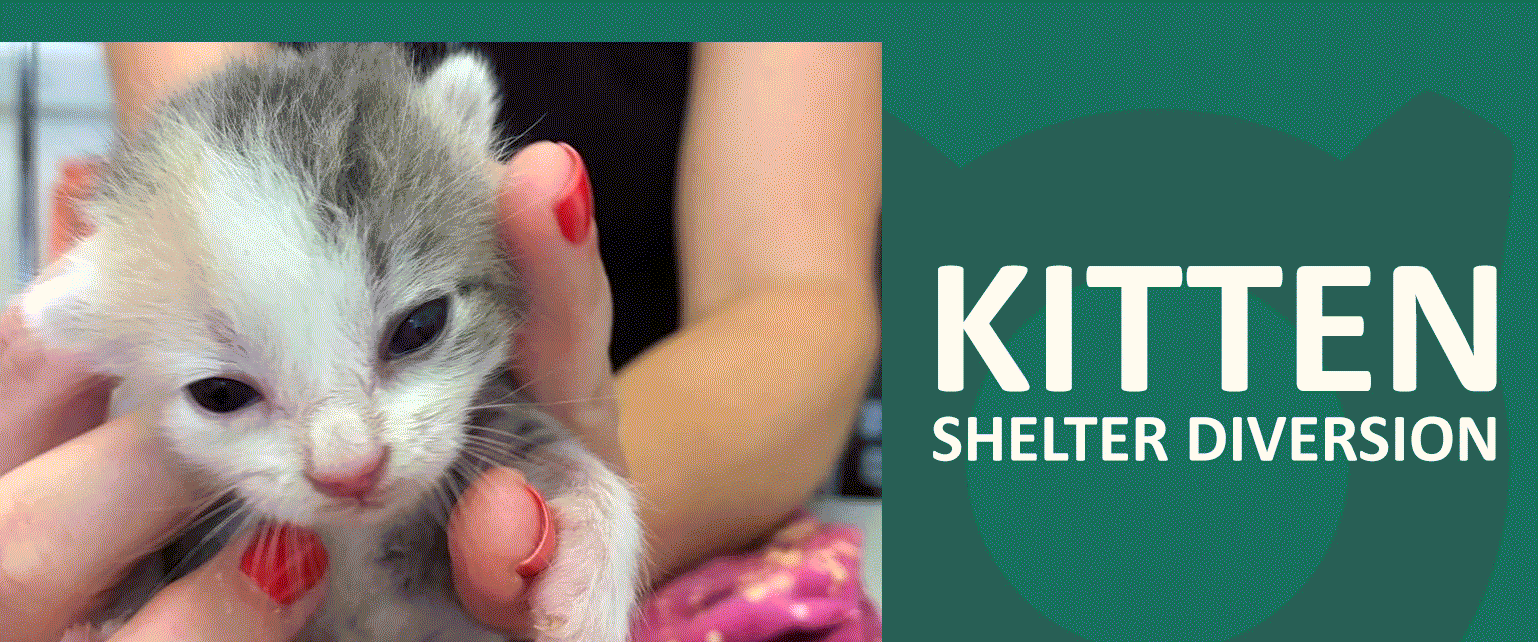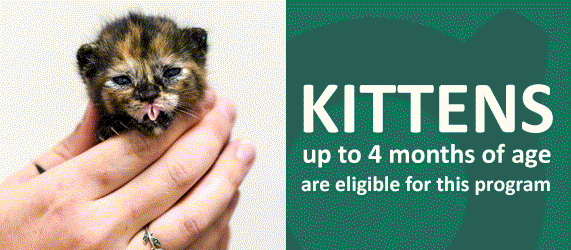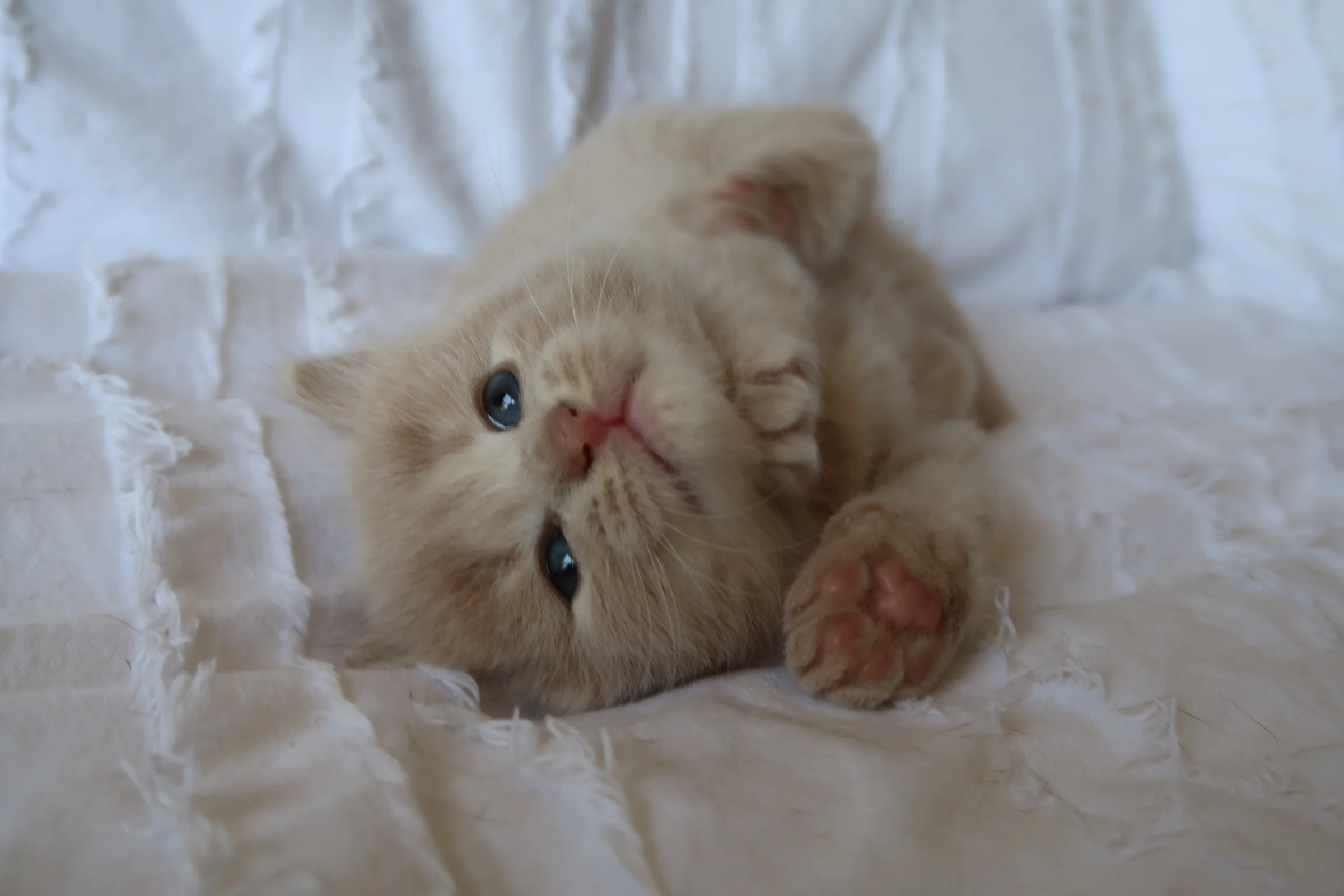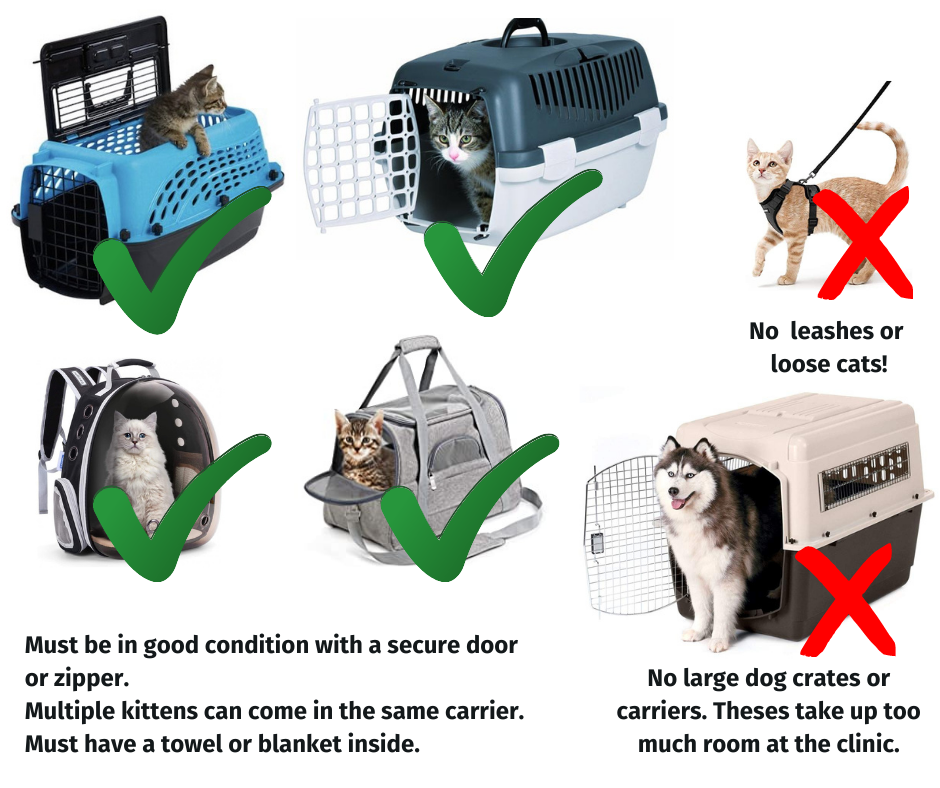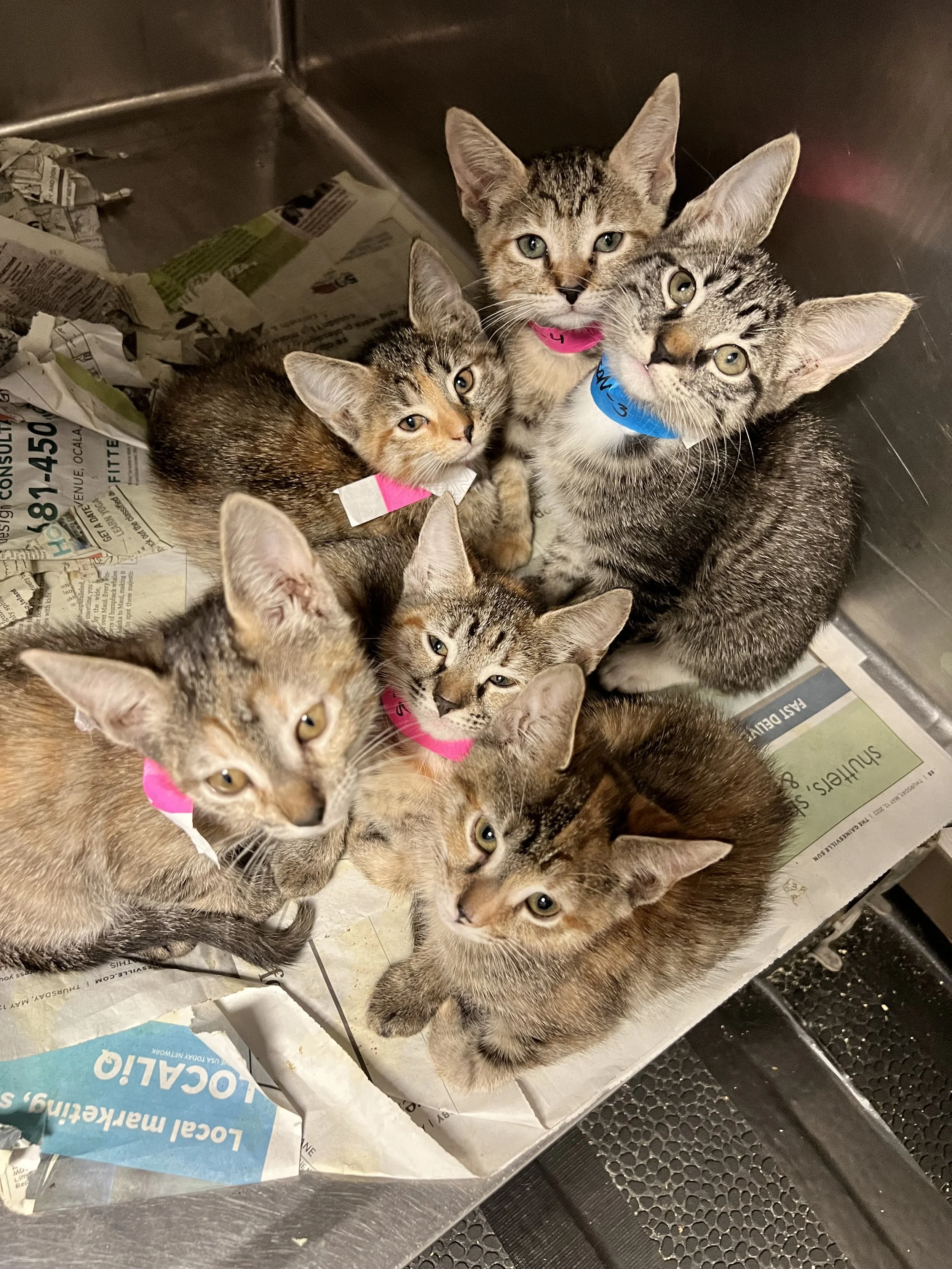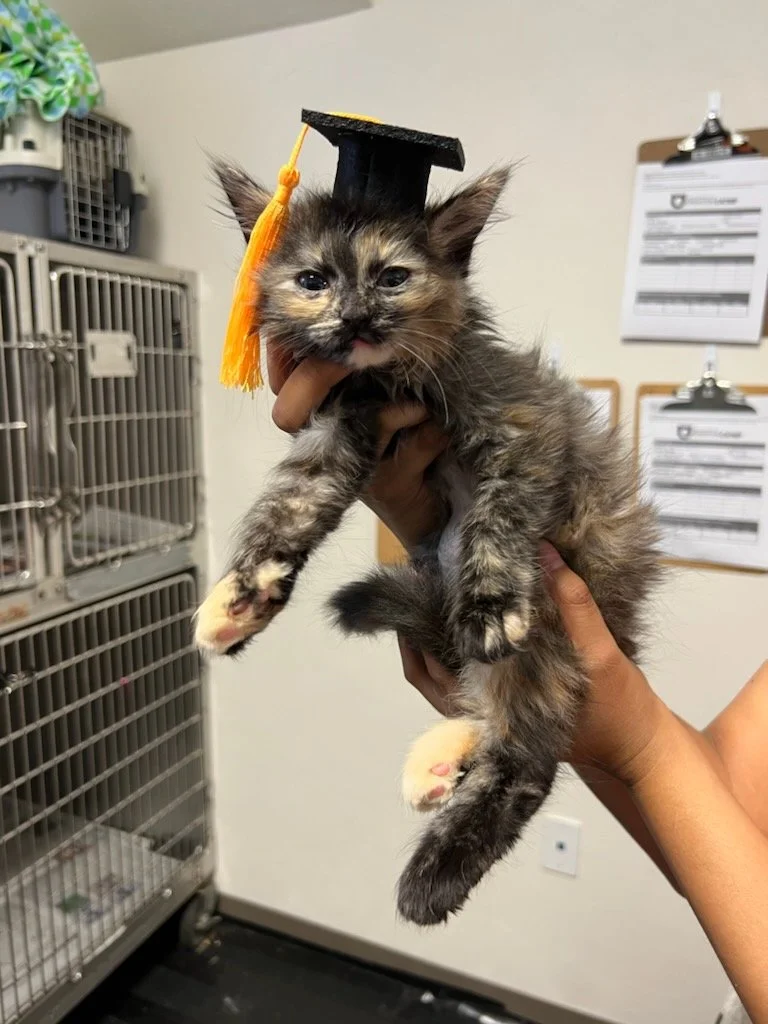ABOUT THE KITTEN SHELTER DIVERSION (KSD) PROGRAM
A Full-Circle program ending the cycle of reproduction for the whole family
The Kitten Shelter Diversion is a partnership between Operation Catnip and the caregivers of community cats working together to keep underage kittens out of our crowded shelters and rescues. Born from the mind of our executive director, she felt the desire to create this program after hearing several stories of caregivers who found and socialized community kittens, and who struggled to find affordable spay-neuter resources. These caregivers used Operation Catnip appropriately for the mother cat, but were giving away the kittens to friends and family unaltered. While many of the new owners had every intention of sterilizing their new kittens, it did not always happen, leaving many of these kittens to be turned outdoors, introducing a new breeding population into the area. The Kitten Shelter Diversion Program offers spay-neuter to these kittens, with the goal of empowering caregivers to adopt them out sterilized and age-appropriately vaccinated, while retaining our original mission of fixing the community cats who produced them.
How is it different from our regular spay-neuter program?
Kittens in this program may be altered at 8 weeks of age (and 2 lbs in weight), rather than the minimum 12 weeks of age (3 lbs in weight) required for our regular program. This means caregivers can place kittens in homes as soon as they’re sterilized, and while they’re extra cute! Kittens up to 4 months of age are eligible for this program.
Kittens will be age-appropriately vaccinated. This means they may not receive a Rabies vaccination if they are aged under 12 weeks of age. The adopters of these kittens should establish care with a veterinarian to complete the vaccination series.
Kittens in this program are not ear-tipped, provided they will be placed in indoor homes. If a caregiver intends to adopt the kittens to outdoor or indoor-outdoor homes, we can provide eartips!
Kittens in this program are not required to come in humane, live traps. Caregivers may bring the kittens in a secure soft-sided or hard-sided carrier in good condition, and multiple kittens may be transported in one carrier.
Caregivers in the Kitten Shelter Diversion Program agree to:
Bring the mother cat and any other unaltered cats from the area where the kittens were found in for spay-neuter services.
House and care for the kittens until they are of age for surgery and adoptive homes are found by the caregiver.
Not surrender them to a shelter or rescue organization after having received medical services from Operation Catnip. Caregivers who find partnership opportunities with local shelters or rescues should immediately discontinue participation in the KSD program and utilize the resources provided by the shelter or rescue organization for spay-neuter. This program is intended to ease the burden on shelters and rescues, and we ask caregivers to seek adoptive homes for kittens through word-of-mouth or other social networks.
Socialize the kittens, if needed. KSD kittens must be friendly and easily handled at the time of their spay-neuter graduation.
Wait to place the kittens into adoptive homes until they have been sterilized.
Rescues and other Adoption Programs:
-The KSD program is specifically meant to divert kittens FROM established shelter and rescue programs. The target audience for this program is individuals from the community who are the main caregivers of the cats in question at the outdoor location where the cats live, not individuals who actively collect kittens from others, and not rescues, shelters, or other adoption programs. This includes private individuals rescuing regularly on a volunteer-basis as well as non-profit organizations. We are happy to refer rescuers who provide public intake of cats and kittens to partner organizations who do provide low-cost spay-neuter opportunities to adoption programs, or discuss options to provide minimum payments to our clinic for the use of our services.
How to Sign up:
***KSD kittens cannot be scheduled through the online portal***
Operation Catnip staff must pre-approve all KSD kittens and litters prior to scheduling. Even if you have brought KSD kittens to us in the past, we need to pre-approve each unique litter or single kitten. Our team will review your responses to some key questions, and will also need to see a recent photo of the kitten(s) in question. Fill out the form below, and our staff will contact you back with next steps.
FAQ’s
How much does it cost to use this program?
KSD Spay-Neuter package: $60- includes surgery, FVRCP, Rabies (if over 12 weeks of age), flea treatment, injection of pain medication, dewormer.
Wellness visit: $20- includes FVRCP vaccines, flea treatment, dewormer. (Available to KSD kittens too young for surgery).
Subsidies may be available to qualified caregivers in need of financial assistance. Subsidies are dependent on geographical location and qualification for the KSD program.
What services are offered to KSD kittens?
We offer age-appropriate deworming, vaccines, and medical care for minor illness such as upper respiratory infections. Our team will work with you to set up a schedule for wellness visits for kittens under 8 weeks of age. Kittens who are 8 weeks of age and older may be scheduled immediately for a surgery appointment, where they will also receive deworming and an FVRCP vaccine. Kittens who are under 12 weeks old at the time of surgery will not receive a Rabies vaccine, so it’s important to remind adopters that they’ll need to continue their vaccination series going forward.
We do not offer emergency services, and may direct you to an emergency clinic if you are experiencing a critical situation with the kittens.
Approved carriers for the Kitten Shelter Diversion (KSD) Program
Do the kittens get eartipped?
No, provided they will be adopted out to indoor homes!
Do the kittens need to come in traps?
Approved KSD kittens do NOT have to come to the clinic in traps, but they DO have to come in a secure cat carrier.
Why do you need the mom cat?
While kittens are so so so cute, the goal of this program ultimately is to make sure this litter is the last one this mother cat will ever have. Our program is built upon a “full-circle” model which ensures we are ending the cycle of reproduction for these kittens and the originating cats. Without sterilizing the mom, we will be seeing kittens again very soon. Our team will provide guidance, advice, and tools for trapping any unaltered cats that live at the original site where the kittens are found. We want you to get them all!
Applications in which the mom cat cannot be produced for spay-neuter will be considered by our team indivudually. Subsidies may be unavailable for situations that do not fit all program criteria, such as not being able to produce the mother cat.
I got the kittens from someone I know and I don’t know where they came from. Can they still be enrolled?
Our team will speak with you about your situation, but in general, we want to ensure that all the cats are sterilized from the original location where the kittens came from. We may ask you to look into the original site or communicate with the original finder to make efforts to get everyone fixed. Helping kittens is a noble cause, but again, without getting the adults fixed, we are leaving a lot of unfinished work behind. Kittens from these kinds of scenarios may not qualify for the program or subsidies.
The mom cat is friendly and I want to find her a home too! Can you please not eartip her?
At this time we do not have an “Adult Shelter Diversion” Program, so unfortunately we must consider all adult cats, friendly or not, candidates for our TNR spay-neuter program. Caregivers are welcome to utilize other spay-neuter services for the mom, such as the Humane Society of North Central Florida, and provide records proving that she has been spayed.
I have a pregnant cat and don’t want to spay her. Can I enroll the kittens in the KSD program once they’re born?
We love kittens, but our organization’s principle is to spay and neuter to reduce the outdoor cat population and subsequent potential suffering. When we have the opportunity to avoid bringing kittens into the world, we will advocate to do so. We do not accept planned-birth kittens in the KSD program.
How do the kittens find homes?
Caregivers participating in this program are asked to find homes on their own for the kittens in their care. Because Operation Catnip is not a rescue, we cannot source adoptive homes and process adoptions for these kittens. Our goal is to provide medical support for them until they are old enough to be spayed-neutered, end the cycle of reproduction for the adult cats in their community, and keep these vulnerable kittens out of crowded rescues and shelters. Check out our page on rehoming resources for tips on finding loving homes for kittens!
when should I start trying to find homes?
We recommend marketing the kittens as early as 4 weeks of age and above, but remember, you’ll need to keep them in your care until they’ve been spayed-neutered. Many program participants have homes lined up and ready for the kittens, so that as soon as they’re fixed they can be adopted. The registered caregivers must pick up the kittens from their spay-neuter appointments, but feel free to have adopters meet you at the clinic to take their new babies home!
What if I can’t foster or find homes for them?
Operation Catnip is happy to provide supplies like kitten milk, bottle-feeding supplies, kitten dry food, canned food, litter, toys, etc to help make the fostering process easier, and we’ve found the rehoming resources to be very successful ways of adopting out the kittens. We understand however that not everyone is in a place in their lives to foster and adopt out kittens, so those who can’t participate in our program should reach out to our local shelter, Alachua County Animal Resources, for public intake of kittens.
We want to encourage our caregivers to try their best at finding them homes, and welcome them giving the program a shot even if they don’t feel 100% confident in finding a home for every kitten. If you have exhausted all available rehoming resources, please contact us to discuss options.
Can I still bring the kittens for vet care after they’ve been spayed-neutered?
KSD kittens officially graduate the program upon completion of their spay-neuter surgeries. After that, it’s up to their adopters or caregivers to continue any vetting. Aside from surgery-related concerns, we will not see KSD kittens after they have been fixed.

